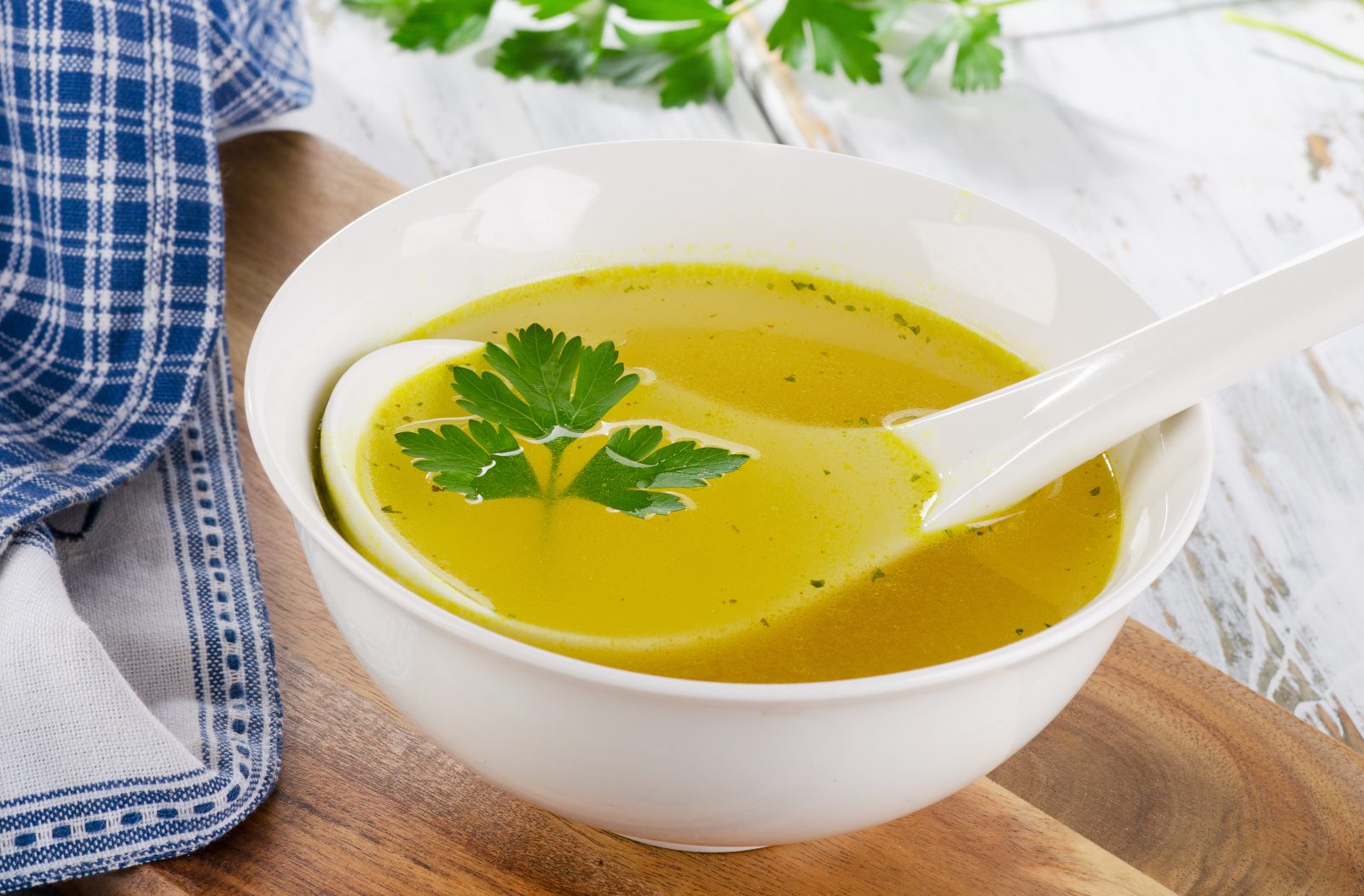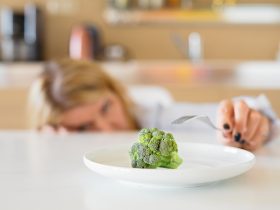A clear liquid diet is a temporary dietary regimen comprising transparent fluids devoid of solid particles or pulp. It is typically prescribed before medical procedures or surgeries involving the digestive tract.
Here’s a detailed overview of what constitutes a clear liquid diet, its purpose, allowed liquids, and restrictions. Is this one of new popular diets for detoxification or is it meant for specific situations? Let’s see.
What Qualifies as Clear Liquids and What Does Not?
Clear liquids refer to transparent beverages that do not leave behind any residue or solid pieces when consumed. They play a crucial role in various medical settings, especially before certain medical procedures or surgeries where it’s essential to avoid solid food intake while maintaining hydration and some caloric intake.
Water is the cornerstone of clear liquids, vital for maintaining hydration levels. Alongside water, black coffee and tea without any milk or cream are permissible, providing a mild stimulant effect without introducing solids. Clear fruit juices such as apple or white grape juice are also allowed, providing some natural sugars and vitamins.
Clear sodas like ginger ale or lemon-lime soda and sports drinks are included for their electrolyte content, helping to replenish minerals lost during periods of restricted food intake.
Gelatin is another option, plain and without any added fruit or toppings, offering a source of hydration and a small amount of calories.
For those requiring additional nutrition or electrolyte support, clear nutrition supplements like Boost Breeze or Pedialyte are appropriate choices.
Clear broth or bouillon, such as chicken or beef broth, provides warmth and flavor without solid components. Ice pops or fruit-flavored ice can also be consumed, as they melt into a clear liquid form when ingested.
However, certain liquids are not permitted on a clear liquid diet due to their opaque nature or potential residue. These include fruit juices with pulp like orange or grapefruit juice, nectars which are thick and not completely clear, and tomato or vegetable juices that are not transparent.
Milk or plant-based milks are restricted due to their solids content, as are ice cream or sorbet which are not liquid at room temperature.
Additionally, cream soups that contain solids like vegetables, noodles, or rice are excluded. Regular nutrition supplements like Ensure or Carnation Instant Breakfast, which are not clear, are also off-limits.
Chocolates or candies that are not clear, often containing milk or solid ingredients, and alcoholic beverages are also typically not suitable for consumption on a clear liquid diet due to their composition and potential effects on the body during medical procedures or recovery phases.
Understanding these distinctions helps ensure compliance with medical recommendations and supports optimal outcomes during periods of dietary restriction involving clear liquids.
It’s essential for individuals undergoing medical procedures or following specific medical advice to consult healthcare providers to determine the most appropriate dietary guidelines based on their individual health needs.
Reasons to Follow a Clear Liquid Diet
Following a clear liquid diet serves several important purposes in various medical contexts, each aimed at supporting optimal health outcomes and recovery processes. One primary reason for adhering to a clear liquid diet is before undergoing medical procedures.
Clear liquids help clear the digestive system of any residual food particles or solids, ensuring a clean and empty gastrointestinal tract. This preparation is crucial for procedures such as colonoscopies or endoscopies, where a clear view of the intestinal lining is necessary for accurate diagnosis or treatment.
Post-surgery recovery is another critical time when a clear liquid diet is prescribed. After surgical procedures, especially those involving the gastrointestinal tract, such as bowel surgeries or abdominal surgeries, the digestive system needs time to rest and heal.
By consuming only clear liquids, which are easily digestible and do not place undue strain on the intestines, patients can support the healing process and reduce the risk of complications.
Individuals with specific medical conditions also benefit from following a clear liquid diet. For instance, during episodes of acute illnesses that cause vomiting or diarrhea, such as gastroenteritis or food poisoning, clear liquids help prevent dehydration.
These fluids provide essential hydration and electrolytes without exacerbating gastrointestinal symptoms, allowing the gut to recover and restore normal function.
Furthermore, conditions like inflammatory bowel disease (IBD), including Crohn’s disease and ulcerative colitis, or pancreatitis, which involves inflammation of the pancreas, may require periods of dietary restriction to manage symptoms and promote healing.
In these cases, a clear liquid diet is often recommended initially to reduce digestive workload and minimize discomfort.
Overall, the primary goals of following a clear liquid diet are to maintain hydration, rest the digestive system, prevent complications, and facilitate medical procedures or recovery phases effectively.
Healthcare providers tailor the duration and specifics of the diet based on individual patient needs and medical indications, ensuring the approach is safe and supportive of overall health and well-being.
Tips for Following a Clear Liquid Diet
For a more structured approach, consider the following tips:
- Variety: Choose a range of clear liquids to maintain interest.
- Regular Consumption: Keep a schedule to avoid hunger and maintain hydration.
- Avoiding Certain Colors: Some medical tests may require avoiding red, purple, or blue liquids that can resemble blood in the digestive tract.
Sample Menu
Here’s an example of what a day on a clear liquid diet might look like:
- Breakfast: Pulp-free fruit juice, gelatin, and black coffee or tea.
- Snack: Another glass of fruit juice and gelatin.
- Lunch: Fruit juice, water, clear broth, and gelatin.
- Snack: Pulp-free ice pop and coffee or tea.
- Dinner: Juice or water, clear broth, gelatin, and coffee or tea.
Duration and Risks
A clear liquid diet is generally intended for short-term use, typically prescribed for periods ranging from 1 to 3 days. Its primary purpose during this short duration is to achieve specific medical goals such as preparing for diagnostic procedures or allowing the digestive system to recover post-surgery or during acute illnesses.
Prolonged use beyond this timeframe is not recommended due to the diet’s limitations in providing sufficient calories, protein, and essential nutrients necessary for maintaining overall health and well-being over an extended period.
While adhering to a clear liquid diet can support medical interventions and recovery phases effectively, there are potential risks associated with its use, especially if not followed strictly or for extended periods. One significant risk is inadequate nutrition intake.
Clear liquids primarily consist of water, electrolytes, and minimal sugars, lacking essential nutrients such as proteins, fats, vitamins, and minerals essential for sustaining bodily functions and overall health.
Prolonged restriction of these nutrients can lead to weakness, fatigue, and impaired immune function.
Another potential risk of a clear liquid diet is low blood sugar levels, particularly concerning for individuals with diabetes or those prone to hypoglycemia.
Clear liquids primarily provide simple sugars, which can cause fluctuations in blood sugar levels if not balanced carefully with insulin or other glucose-regulating medications.
Moreover, failure to strictly adhere to the prescribed clear liquid diet can lead to inaccurate test results for diagnostic procedures.
For instance, residual solid foods or opaque liquids left in the digestive tract can obscure views during colonoscopies or endoscopies, compromising the accuracy of medical evaluations and potentially requiring rescheduling of procedures.
Overall, while a clear liquid diet serves specific medical purposes effectively within a short-term framework, healthcare providers carefully monitor its use to mitigate risks and ensure patient safety.
Patients are typically transitioned back to a regular diet as soon as medically appropriate, allowing for the resumption of adequate nutrition intake and the restoration of overall health and well-being.
Bottom Line
A clear liquid diet is a specialized regimen designed to serve specific medical needs briefly. It ensures a clear digestive tract for medical tests, aids in post-surgery recovery, and supports gastrointestinal rest during illness.
Always consult healthcare providers for guidance tailored to individual health conditions and needs when considering a clear liquid diet.














Find Us on Socials